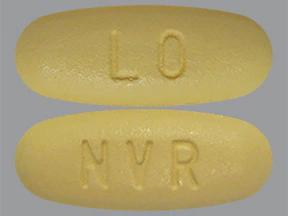Tabrecta Disease Interactions
There are 4 disease interactions with Tabrecta (capmatinib).
Capmatinib (applies to Tabrecta) liver dysfunction
Moderate Potential Hazard, Moderate plausibility. Applicable conditions: Liver Disease, Hyperbilirubinemia
Capmatinib is primarily metabolized by CYP450 3A4 and aldehyde oxidase and its use may cause hepatotoxicity. Assess liver function tests, including ALT, AST, and total bilirubin before administering capmatinib, every 2 weeks during the first 3 months of treatment, then once a month or as clinically indicated, with more frequent testing in patients who develop increased transaminases or bilirubin. Caution when using this agent in patients with liver disorder or a disorder of bilirubin metabolism. Withhold, reduce the dose, or permanently discontinue capmatinib based on severity of adverse reactions. No clinically significant effects on the pharmacokinetic parameters of capmatinib were identified in patients with mild, moderate or severe hepatic impairment.
Capmatinib (applies to Tabrecta) lung disease
Moderate Potential Hazard, Moderate plausibility. Applicable conditions: Pulmonary Impairment
The use of capmatinib may cause interstitial lung disease (ILD)/pneumonitis. Exercise care when using this agent in patients with disorders of the lung. It is recommended to monitor for new or worsening pulmonary symptoms indicative of ILD/pneumonitis. Immediately withhold treatment with capmatinib in patients with suspected ILD/pneumonitis and permanently discontinue if no other potential causes of ILD/pneumonitis are identified.
Capmatinib (applies to Tabrecta) photosensitivity
Moderate Potential Hazard, Moderate plausibility. Applicable conditions: Skin Cancer, History - Skin Cancer
The use of capmatinib may cause photosensitivity reactions. Exercise care when using this agent in patients predisposed to photosensitivity reactions or with a history of skin cancer. It is recommended that patients use precautionary measures against ultraviolet exposure such as use of sunscreen or protective clothing during treatment with capmatinib. Advise patients to limit direct ultraviolet exposure during treatment.
Capmatinib (applies to Tabrecta) renal dysfunction
Moderate Potential Hazard, Moderate plausibility.
No clinically significant effects on the pharmacokinetic parameters of capmatinib were identified in patients with mild to moderate renal impairment. Therefore, no dosage adjustment is recommended in patients with mild or moderate renal impairment. Exercise care when using capmatinib in patients with severe renal impairment as it has not been studied in these patient population.
Switch to professional interaction data
Tabrecta drug interactions
There are 314 drug interactions with Tabrecta (capmatinib).
Tabrecta alcohol/food interactions
There is 1 alcohol/food interaction with Tabrecta (capmatinib).
More about Tabrecta (capmatinib)
- Tabrecta consumer information
- Check interactions
- Compare alternatives
- Pricing & coupons
- Reviews (1)
- Drug images
- Side effects
- Dosage information
- During pregnancy
- FDA approval history
- Drug class: multikinase inhibitors
- Breastfeeding
- En español
Related treatment guides
Drug Interaction Classification
| Highly clinically significant. Avoid combinations; the risk of the interaction outweighs the benefit. | |
| Moderately clinically significant. Usually avoid combinations; use it only under special circumstances. | |
| Minimally clinically significant. Minimize risk; assess risk and consider an alternative drug, take steps to circumvent the interaction risk and/or institute a monitoring plan. | |
| No interaction information available. |
See also:
Further information
Always consult your healthcare provider to ensure the information displayed on this page applies to your personal circumstances.


